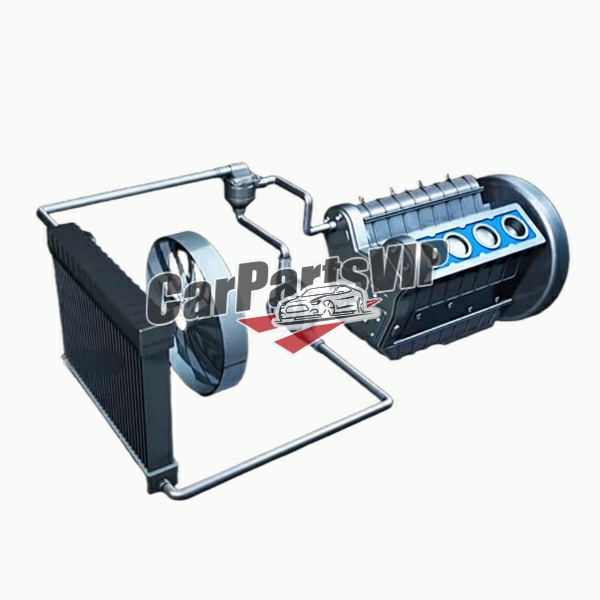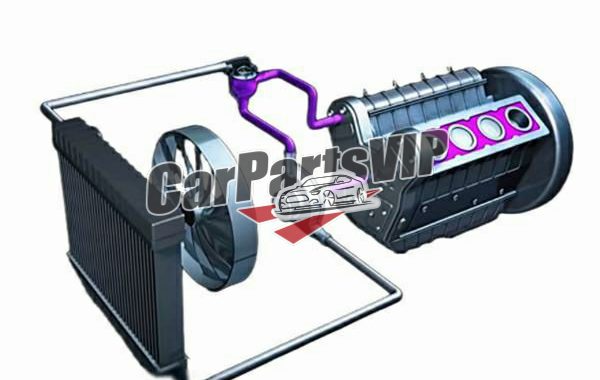When the engine is working, the temperature of the cylinder combustion chamber can reach 2000-2500 degrees. Long-term operation will cause the engine temperature to be too high and affect performance, and even damage the parts. The cooling system is responsible for dissipating the heat of each part in time to prevent them from overheating. Common cooling systems are mainly divided into two categories: air cooling system and water cooling system. Because the water cooling system cools evenly, takes effect quickly and has low noise, it is widely used in household engines.
The water cooling system is mainly composed of a water pump, a radiator, a cooling fan, a thermostat, an engine body water jacket, a cylinder head water jacket, and a water pipe loop. After the engine is started, the water pump will be driven to work. Under the action of the water pump pressure, the coolant begins to enter the engine body water jacket from the water pipe. Since the engine body water jacket is distributed around the cylinder, the coolant will absorb heat when it flows through, and then continue to flow into the cylinder head water jacket, and then absorb heat from the cylinder head water jacket again and flow out, and then enter the thermostat. The thermostat is a temperature control valve that can automatically adjust the opening and closing of the valve according to the temperature to control the flow direction of the coolant. When the engine is just started, the temperature of the coolant is low. Under the control of the thermostat, the coolant flows directly back to the water pump, and then flows to the engine body again after being pressurized by the water pump. In this cycle, since the coolant flows in this small range of the water pipe loop, it is called a small cycle. The radiator does not participate in the work during the small cycle, so the heat of the engine will not be lost, which is conducive to engine warm-up. Therefore, in winter, you need to wait a few minutes after starting the vehicle before starting it again. This is conducive to the preheating of various engine parts and has the function of protecting the parts. After the engine has been running for a period of time, the temperature of various parts rises, and the temperature of the coolant also rises accordingly. When a certain temperature is reached, the thermostat will gradually open the valve leading to the radiator. At the beginning, the valve opening is small, and only part of the coolant will flow to the radiator. After the radiator dissipates heat and cools down, it returns to the water pump through the water pipe. This process is called a large cycle.
At the same time, another part of the coolant will flow directly back to the water pump through the thermostat. Therefore, both the large and small cycles will participate in the work in this process, and they work together. When the engine temperature continues to rise and the coolant temperature exceeds the standard value of the thermostat temperature, the thermostat valve will be fully opened, and the valve leading to the water pump will be automatically closed. At this time, all the coolant will flow to the radiator and enter the full large circulation mode. In this process, the coolant passes through the radiator and dissipates heat and cools down under the action of the cooling fan, and the heat is finally dissipated into the air. The cooled coolant continues to flow to the water pump through the pipeline, and the engine’s heat dissipation work continues in this way over and over again. This is the complete working process of the engine cooling system.
In conclusion, the component that prevents the engine from overheating is the thermostat. When it detects that the temperature rises, it will open the valve to start the heat dissipation function, so that the coolant can continue to cool the engine. The small circulation mode of the coolant is conducive to the preheating of the engine. It is best to warm up the engine for a few minutes before driving in winter, which helps protect the parts. The large circulation mode of the coolant system is a complete heat dissipation mode, at which time the cooling system fully dissipates heat for the engine.



